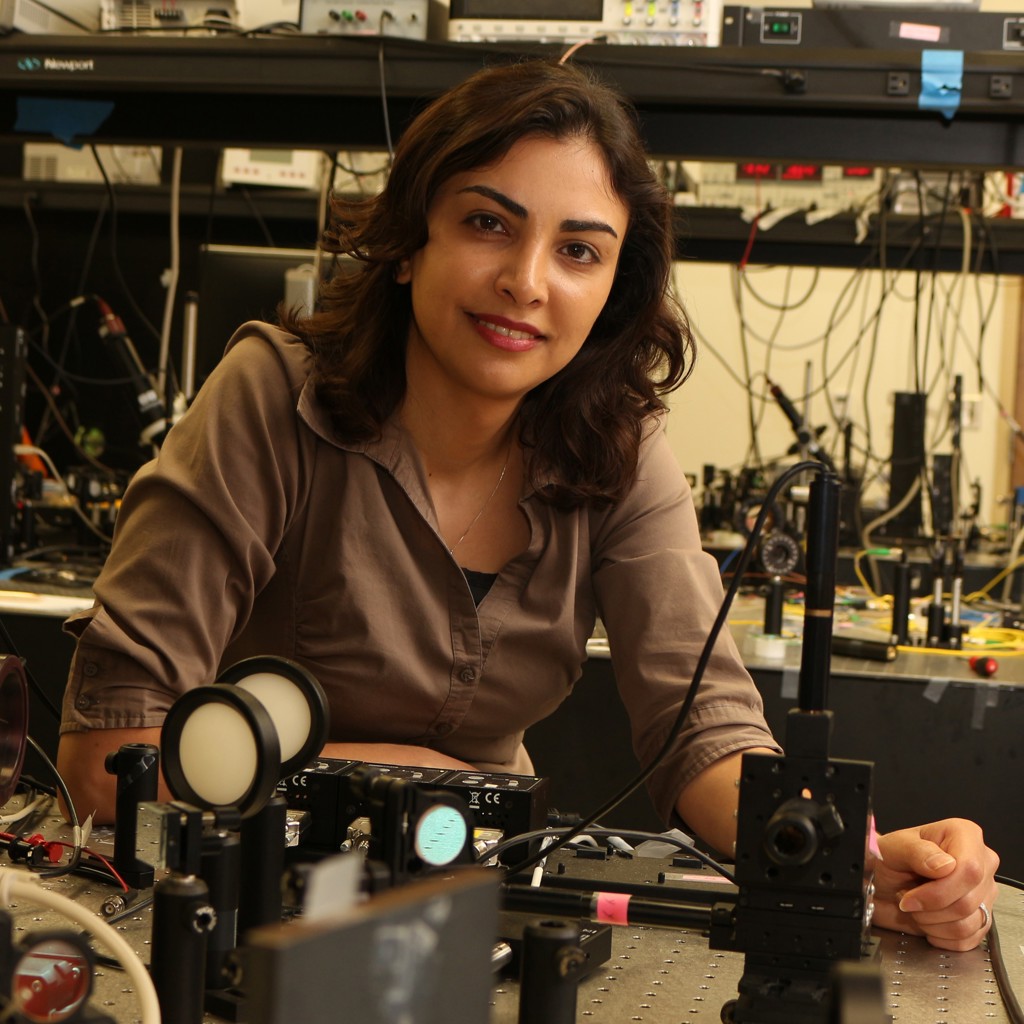Mona Jarrahi
University of California, Los Angeles, United StatesFor pioneering contributions to terahertz optoelectronics and microwave photonics through development of novel engineered materials, plasmonic nanostructures, and quantum well devices.

From a young age, Mona Jarrahi was always interested in electronic gadgets and how they worked. This fascination led her to want to learn how to make new devices to solve modern problems. She originally started out in physics and engineering, but as her research interests developed into high-frequency devices, she moved into the optics and photonics field. As Professor of Electrical and Computer Engineering at the University of California, Los Angeles, she directs the Terahertz Electronics Laboratory where she and her colleagues are working to reduce the limitations of existing terahertz and millimeter-wave devices.
Mona says that the “terahertz research is at the crossroads of different fields” which makes it interdisciplinary by nature. Photonics, semiconductor device physics, and chemistry, in addition to other fields, all play a role in terahertz research. Recent advances in technology—such as high-performance lasers, advanced nano-fabrication and packaging tools, and powerful imaging, spectroscopy, and communication algorithms as well as increases in available resources - have removed a number of obstacles in terahertz research. This increases the chance for breakthrough discoveries and the possibility of bringing terahertz technology to the public for practical uses such as non-destructive quality control of industrial and pharmaceutical products, biosensing, medical imaging, atmospheric studies and space exploration.
Because of the cross-disciplinary nature of terahertz research, collaboration is key to making advances. Mona notes that it is important to realize that one person will never have all of the background and knowledge necessary for success. Finding collaborators and maintaining connections is crucial to making advances. Mona’s participation in OSA’s traveling lecturer program, attendance at various OSA conferences, and volunteer experience on committees has helped her do just that. She says the ability to visit different universities has helped her find other researchers to work with, as well as recruit students. It also helps to educate the younger generation about her research in the hopes that others will also find it interesting and become involved.
When it comes to the future of her research, Mona says, “new ideas are constantly coming and breakthrough opportunities are numerous” and adds that the challenges she faces and the continuous need to learn new things are what make her research exciting. She encourages young scientists to do what they are passionate about and to make sure that they maintain flexibility in their research to allow for collaboration and new developments.
Profile written by Jeanette Gass
